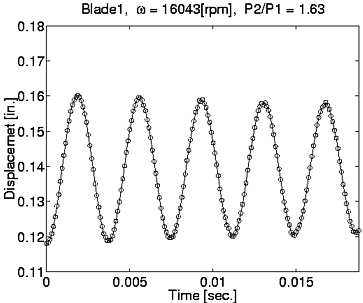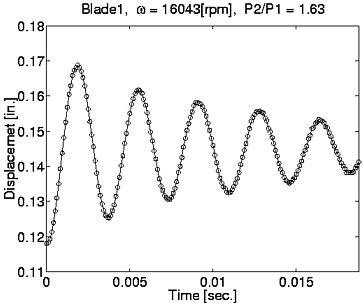
Hirofumi Doi
Technical Research and Development Institute
Japan Defense Agency
5-1 Ichigaya-Honmura-cho
Shinjuku, Tokyo, 162-8830, Japan
Phone: +81 (3) 3268-3111
Fax : +81 (3) 3267-6575
Email: doi@jda-trdi.go.jp
Background
Ph.D.
Department of Aeronautics and Astronautics, Stanford University (1998-2001)Research Engineer/Flight Test Engineer
Japan Defense Agency (1993-1998)Master of Science
Department of Aeronautics and Astronautics, University of Tokyo (1991-1993)Bachelor of Science
Department of Aeronautics and Astronautics, University of Tokyo (1987-1991)
Research Interests
Fluid/Structure Coupled Computations for Turbomachinery FlowThe unstable, self-excited or forced vibrations of rotor blades must be avoided in designing high performance turbomachinery components because they may induce structural failures. In evaluating the stability of such vibrations, computational approaches have been bearing an increasing role due to the surprising progress of computer technologies and advanced algorithms. They are now at a stage where fluid/structure coupled simulations of aeroelastic phenomena in turbomachinery for real geometries are in contest for practical use. The present study demonstrates the capabilities of a fluid/structure coupled computational approach (Fig.1) which consists of an unsteady three-dimensional Navier-Stokes flow solver, TFLO, a finite element structural analysis package, MSC/NASTRAN , and the coupling interface between the two disciplines. The flow solver relies on a multi block cell-centered finite volume discretization and the dual time stepping time integration scheme with multigrid for convergence acceleration. Parallelization with multiple processors is also performed to achieve faster computations making use of the Message Passing Interface. As far as the interface is concerned, high accuracy is pursued with respect to load transfer, deformation tracking and synchronization. As a result, the program successfully predicts the aeroelastic responses (Fig.3, Fig.4) of a high performance fan, NASA Rotor 67 (Fig.2), over a range of operational conditions. The major contribution to the aerodynamic damping for turbomachinery blade motions is observed to be the unsteady pressure generated at the location of the shock. The results show that the unsteady pressure may act to damp or excite the blade motion mainly depending on the inter-blade phase angle. It is concluded that the level of sophistication in the individually sophisticated disciplines together with an accurate coupling interface will allow for accurate prediction of flutter boundaries of turbomachinery components.
Fig.1 Coupling Strategy
Fig.2 NASA Rotor 67
Mesh, Structural model, Mach contour at near peak efficiency, Mach contour at near stall
Fig.3 Displacement in the circumfarential direction at the tip
Near peak efficiency, Interblade phase angle = 0 degree
Movie: Mach contour in the passage, Pressure contour on the suction side
Fig. 4 Displacement in the circumfarential direction at the tip
Near peak efficiency, Interblade phase angle = 180 degree
Movie: Mach contour in the passage, Pressure contour on the suction side





